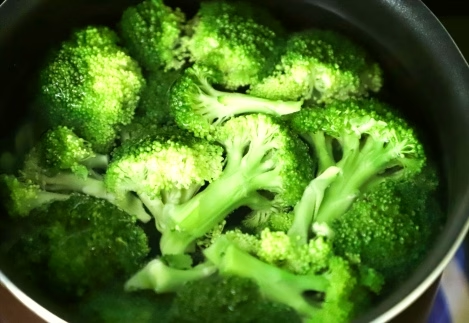Which of these methods is most effective for removing pesticides from vegetables: salt water, vinegar, baking soda, or tap water?
When buying groceries, the biggest worry is that pesticide residue might be present. Washing vegetables is a common problem for many people, so this article will teach you how to wash them properly.
Why do crops have pesticide residue?
Crops inevitably come into contact with pesticides. Even if most of them are washed away by rain or naturally dissolved, some areas are prone to accumulation. Therefore, different crops and their shapes require different cleaning techniques.
On the other hand, after applying pesticides, farmers often intentionally maintain a minimum effective dosage until harvest. Therefore, it’s normal for some residue to remain in the final harvest, as long as pesticides are used.
Since pesticide residue is inevitable, we should be concerned about whether farmers use legal pesticides and whether the last spraying falls within the “safe harvest period” to ensure that pesticide residue levels have dissipated to a safe level by harvest.
Which is the best way to wash vegetables: salt, vinegar, baking soda, or tap water?
Produce harvested within the safe harvest period can be eaten safely and healthily as long as it’s washed carefully! But there are many traditional remedies for washing vegetables. Which are true and which are myths?
Some people say that using salt water can remove pesticides from fruits and vegetables. Is this true?
Water-soluble pesticides are more easily washed away by rain and dew. Therefore, most pesticides adhering to the surface of fruits and vegetables are fat-soluble. Therefore, the traditional remedy of using salt water to wash vegetables is a myth. Salt water doesn’t dissolve fat-soluble substances very well. If the salt water isn’t washed thoroughly, you might accidentally end up consuming too much salt.
Can washing vegetables with vinegar really remove all pesticides?
In reality, washing vegetables with vinegar isn’t as magical as it seems.
Washing vegetables with vinegar isn’t suitable for all crops. For example, using it on fruits and vegetables sprayed with chlorpyrifos can actually prolong their degradation time, counteracting the pesticide’s effectiveness in removing it. A lingering vinegar smell can also affect the flavor of the dish.
It’s recommended to choose a different washing method for better results.
Is washing vegetables cleaner with alkaline “baking soda”?
Baking soda, chemically known as sodium bicarbonate, is a weakly alkaline substance. The traditional folk remedy for washing vegetables with baking soda is based on the idea that acidic pesticides degrade faster in an alkaline environment.
However, aside from acidic pesticides, it’s rumored that soaking pesticides like Trichlorfon in baking soda can actually have the opposite effect.
For acidic pesticides (such as chlorpyrifos, which is commonly used on cruciferous vegetables or leafy vegetables), the half-degradation period for acidic pesticides (such as chlorpyrifos, which is commonly used on cruciferous vegetables) is six days under neutral conditions. However, at a slightly alkaline pH of 9, this period drops to just half a day, though the removal efficiency is much faster. But this isn’t enough, as washing vegetables usually takes only a few minutes. Using baking soda for a short time isn’t necessarily more effective than rinsing with water.
There are many different types of pesticides, and it’s impossible to simply use the concept of acid-base neutralization to claim that any single cleaning agent can remove all pesticides. Instead, repeatedly rinsing with running water is the simplest and most reliable method.
Different crops and shapes require different cleaning techniques.
“Rinsing with running water” is the simplest and most effective way to avoid pesticide residue. Soak in clean water for 3 minutes to dissolve the pesticide, then rinse with running water. The soaking time doesn’t need to be too long. The key is to rinse with running water so that the water can remove any pesticide residue from the vegetables and fruits.
・Leafy vegetables (cabbage, Chinese cabbage, kohlrabi, lettuce): Peel off the outer 2-3 leaves, soak and rinse thoroughly, and then cut off the base.
・Large leafy vegetables (bok choy, bok choy, rapeseed, spinach): Rinse the leaves thoroughly under running water, then remove any petioles or roots that may contain pesticide residue.
・Small leafy vegetables (grassroot, water spinach, garland chrysanthemum): Prepare a basin of clean water, allow the leaflets to unfold, and then rinse the leaves under a gentle stream of water.
・Vegetables whose flowers are eaten but not the leaves (broccoli, cabbage): Blanching is recommended before consumption. Hold the stalk with the florets facing upward and rinse under a gentle stream of water, rotating the florets to ensure each floret is thoroughly rinsed. After rinsing, remove the florets from the main stem. Finally, blanch for 3-5 minutes to break down any pesticide residue in the crevices.
・Vegetables with dented surfaces and stemmed heads (beans, bell peppers, eggplants, fruits and vegetables): Soak the florets to allow any pesticide residue in the dents to dissolve in the water. Rinse with clean water and brush gently with a soft brush. Finally, remove the stems.
・Storable vegetables (pumpkin, radish): Plants have the ability to break down small amounts of pesticides. Waiting for 1-2 days after purchase before eating can also reduce the risk of pesticide residue.
・Small fruits (longan, lychee, strawberry, grapes): Soak for 3-5 minutes to dissolve the pesticides. Rinse with clean water, then cut the fruit from the stem, peel, and eat.
・Fruits whose skins are not edible (mangoes, pears, citrus fruits): Rinse thoroughly with clean water, then remove the skin and stems.
・Fruits whose skins are edible (guava, plums, peaches, wax apples): Soak for 3 minutes, then rinse. Gently brush the surface of the fruit with a soft brush. Finally, remove any sunken areas to avoid eating.


Leave a Reply